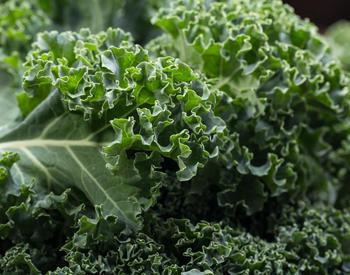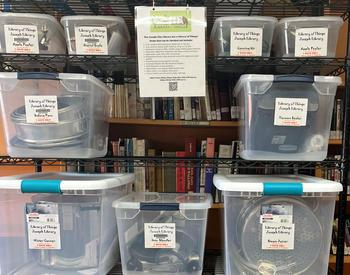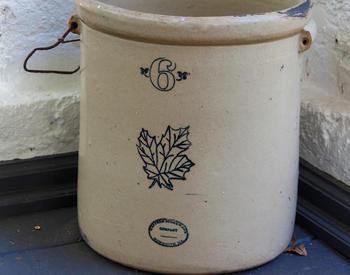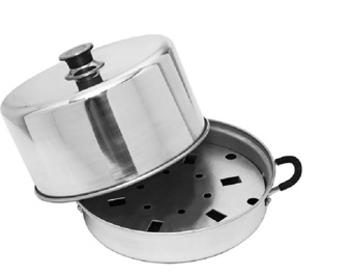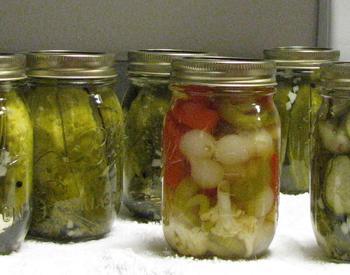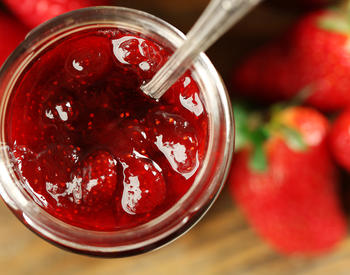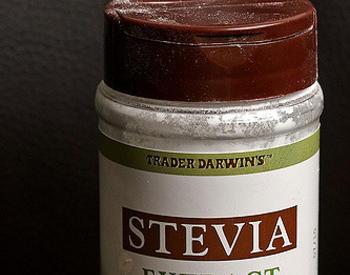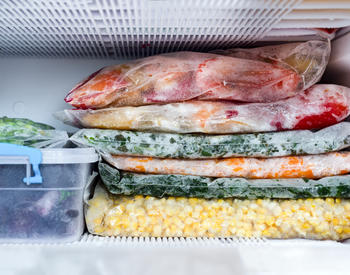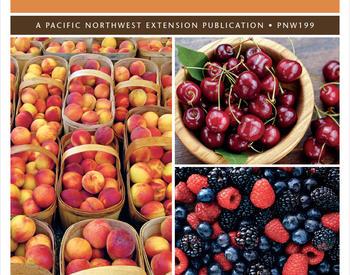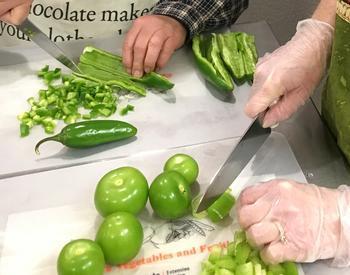Download this publication as a PDF
Asian pears (also called apple pears or Oriental pears) are a unique fruit. Although some have the shape and crispness of an apple, they actually are a true pear. As this fruit has grown in popularity in the United States, nurseries have introduced dozens of varieties for the home orchardist to grow. Grocery stores also regularly stock this fruit during the fall and winter months.
Selection/picking
Unlike other pears, Asian pears ripen on the tree. The fruit is ready to pick when it is easily removed from the tree. (Do not tug!) You can also watch for color changes in the fruit to judge ripeness. Varieties that are green when unripe will begin to turn yellow as they ripen, and varieties with russet-type skin will begin to turn brown
They can be stored for about a week at room temperature and up to three months in the refrigerator.
Asian pears are usually sold ripe and ready to eat or preserve. Because the fruit is easily bruised, they are often packed in padded containers. Ripe Asian pears can be stored for about a week at room temperature and up to 3 months in the refrigerator. Store them in a plastic or paper bag, taking care to cushion the fruit from bumps and bruises.
There are several varieties of Asian pears which vary in flavor, color and texture. The acidity can also vary among varieties. Some can be classified as “low acid.” As a result, precautions must be taken when canning. All home-canned Asian pears must be acidified to prevent growth of the bacteria which cause botulism food poisoning. Adding 1 Tablespoon bottled lemon juice directly to each pint jar (2 Tablespoons per quart) before canning will bring the acidity of all varieties into the safe range. They then may be safely canned using procedures for other types of pears
Canning procedure
Wash pears. Peel, cut in half and remove cores. Slice, if desired. To prevent browning, put cut fruit into water containing either an anti-darkening product (using manufacturer’s instructions) or ascorbic acid powder (1 teaspoon pure powder per gallon ) or ground vitamin C tablets (Six - 500 mg tablets per gallon), until ready to pack into jars. Drain just before packing hot or raw.
Hot pack
Heat fruit in either hot water or syrup. (For lightly sweetened syrup, dissolve 1½ cups sugar in 5¾ cups water.) Add 1 Tablespoon bottled lemon juice to each pint jar (2 Tablespoons per quart). Pack hot fruit into jars and cover with boiling water or syrup, leaving ½ inch headspace. Remove air bubbles with a plastic spatula or blunt knife. Wipe jar rims and adjust canning lids. Process pints for 20 minutes in a boiling water canner; quarts for 25 minutes. After processing, take canner off heat. Remove lid and wait 5 minutes before removing jars.
Hot Pack Altitude Adjustments (Altitude in Feet)
Pints
1,001 to 3,000 - 25 Minutes
3,001 to 6,000 - 30 Minutes
6,001 & above - 35 Minutes
Quarts
1,001 to 3,000 - 30 Minutes
3,001 to 6,000 - 35 Minutes
6,001 & above - 40 Minutes
Raw pack
Pack raw fruit into jars. Add 1 Tablespoon bottled lemon juice per pint jar (2 Tablespoons per quart). Cover with boiling water or syrup as above, leaving ½ inch headspace. Remove air bubbles. Wipe jar rims and adjust lids. Process pints for 25 minutes in a boiling water canner; quarts for 30 minutes. After processing, take canner off heat. Remove lid and wait 5 minutes before removing jars.
Raw Pack Altitude Adjustments (Altitude in Feet)
Pints
1,001 to 3,000 - 30 Minutes
3,001 to 6,000 - 35 Minutes
6,001 & above - 40 Minutes
Quarts
1,001 to 3,000 - 35 Minutes
3,001 to 6,000 - 40 Minutes
6,001 & above - 45 Minutes
Drying
Wash and remove outer skin. Core and cut into ½ inch thick slices. Dry until leathery and pliable with no moisture pockets.
Eat as a snack or use in recipes for dried pears.
The research on acidity of Asian pear varieties was supported by: OSU Southern Oregon Experiment Station; George Frazier, Tangent, Oregon; Janice Gregg, former Jackson County Extension home economist; Mary Jo Kay, Jackson County Master Food Preserver volunteer.
Source: OSU Master Food Preserver Program

